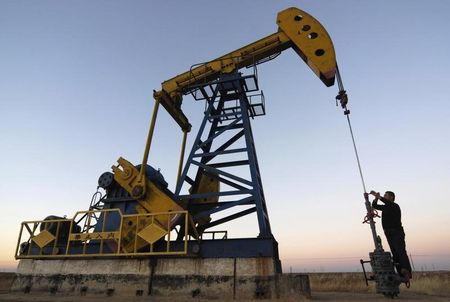
Investing.com — Oil prices rose Thursday on concerns that the escalating Middle East conflict could disrupt crude flows from this key exporting region.
By 08:40 ET (12.40 GMT), the U.S. crude futures traded 2.2% higher at $71.61 a barrel and the Brent contract climbed 1.9% to $75.33 a barrel.
Crude rises on Middle East tensions
The crude benchmarks continue to push higher as traders await Israel’s response to Iran firing more than 180 missiles into its territory, given the potential for any response to target Iranian oil infrastructure, hitting the supply of a senior OPEC member.
“There have been suggestions that Israel could target Iranian oil facilities, which would have the potential to push oil prices significantly higher depending on the scale of the attack,” said analysts at ING, in a note.
“Iran exports roughly 1.7m b/d of crude oil, so the potential impact is meaningful,” ING added. “However, an attack on oil facilities may upset the US, particularly as we move closer to elections. A more limited response would be hitting launch sites used for the recent missile attack, while a significant escalation would be if Israel decided to target Iranian nuclear facilities.”
OPEC+ keeps output unchanged
The members of the Organization of Petroleum Exporting Countries and allies, a group widely known as OPEC+, met on Wednesday, and recommended no change to its output policy.
The group is scheduled to raise output by 180,000 barrels per day each month, starting in December.
“The only thing mentioned about the geopolitical situation and the conflict was the hope for non-escalation,” said an OPEC+ source familiar with the discussions, according to Reuters.
While OPEC has enough spare capacity to compensate for the loss of Iranian supplies, much of that capacity is in the Middle East Gulf region and potentially vulnerable should the conflict escalate further, said Giovanni Staunovo, analyst at UBS.
US crude inventories rise – EIA
U.S. crude inventories rose by 3.9 million barrels to 417 million barrels in the week ended Sept. 27, the Energy Information Administration said on Wednesday, compared with expectations of a 1.3 million barrel decline.
This post is originally published on INVESTING.



